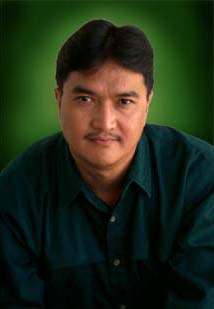Part Two B - Facial Angles
by Chuck Gardner
|
Facial Angles
The angles of the human face and body people consider visually pleasing are universal regardless of the medium. Movie directors and cinematographers are masters of lighting and facial angles which make the human face appear natural and three dimensional. They in learned the techniques from the poses and lighting used in paintings by master artists. A knowledgeable photographer can use these same "classic" facial views and poses to great advantage, even in candid situations, to improve the appearance of people they photograph. Full-face  Unfortunately the only people who look really good full face are those
blessed with perfectly symmetrical narrow faces. Like the ones who make
their living as models and beg the question, "Is it possible for a fashion
photographer to take a bad picture of a super model regardless of what camera,
pose, or lighting he uses?" Unfortunately the only people who look really good full face are those
blessed with perfectly symmetrical narrow faces. Like the ones who make
their living as models and beg the question, "Is it possible for a fashion
photographer to take a bad picture of a super model regardless of what camera,
pose, or lighting he uses?"
The full-face angle will tend to make round faces wider, and make an make any unsymmetrical features such as a crooked nose or uneven ears very apparent. The full-front angle is often perceived as more masculine, but that perception is actually due more to the position of the head relative to the shoulders rather than the facial angle. This is covered below under posing.  The rule of thumb (actually the rule of ears) for posing a person full
face is to make sure both ears, if in the picture, are the same size, or would be
if not covered by hair. Using the "rule of ears" as a mental checklist ensures
the subject is shot full face and not at an odd angle resulting in
an unnatural appearance. The rule of thumb (actually the rule of ears) for posing a person full
face is to make sure both ears, if in the picture, are the same size, or would be
if not covered by hair. Using the "rule of ears" as a mental checklist ensures
the subject is shot full face and not at an odd angle resulting in
an unnatural appearance.
Goto Next Page > Goto < Previous Page > Goto Class Outline Goto super.nova.org my home page. |